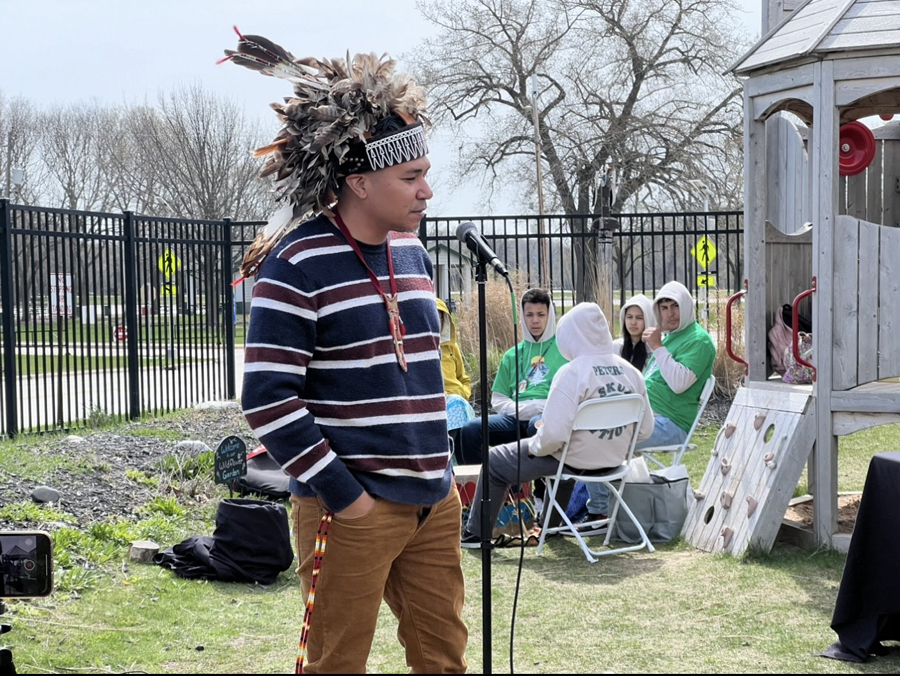
BY GRACELYN GIESE
CONTRIBUTING WRITER
GREEN BAY – On Friday, April 26, the Menominee Tribal Enterprises hosted a Peace Tree Ceremony at the Children’s Museum of Green Bay.
The planting and celebration of the peace tree comes from the oral tradition of the Haudenosaunee (Iroquoian) people and has been passed down for hundreds of years.
At the ceremony, the story of the peace tree was retold by James Flores (Yotahalakwatase), a member of the Oneida Nation and the tribal liaison of the Milwaukee Public Museum.
The story of the peace tree begins with the people of the Seneca, Cayuga, Onondaga, Mohawk and Oneida nations at war and “it looked like it was never going to end.”
The feud came to a head when Hiawatha, a famed and great warrior, discovered that his family had been killed.
Mourning, the warrior left his village and traveled to a body of water where he saw a figure on a canoe made of white stone.
This man was a prophet known as the Peacemaker and shared his message of peace with Hiawatha. Inspired, he took the message back to his village and they met with the leaders of the five tribes.
Four of the tribes accepted the message of peace, but the Onondaga chief and warlord refused to lay down arms.
After this Hiawatha and the Peacemaker went in search of Jigonsaseh, a woman with healing abilities, in hopes she could heal the chief, with the promise that if she succeeded she would be made clan mother and have the authority to choose chiefs going forward.
The woman completed her task, combing the snakes from the chief’s hair and clearing his mind so “he was able to hear the message of peace clearly and he finally agreed to join.”
The chiefs of the five tribes came together and, under the Peacemaker’s Great Law of Peace, ended the fighting and bloodshed.
To commemorate the newfound peace, the solidified group uprooted a white pine tree and “buried their weapons of war under a white pine as a way to show their commitment to live this way.”
Today, peace trees have been planted across Wisconsin to commemorate lasting peace and goodwill among all people.
In alignment with the story, attendees of the ceremony placed and buried their own arrowheads under the small white pine in a symbolic gesture of commitment towards peace.
This newest peace tree can be seen growing outside of the Children’s Museum of Green Bay for years to come.
